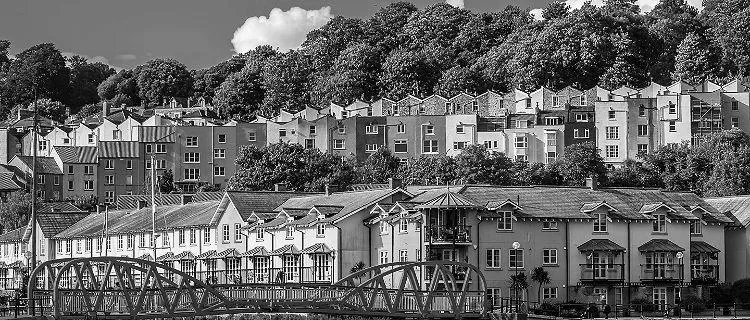While visiting Bristol, you can find a wide variety of things to do and see. The city is located in southwest England and has a rich maritime heritage. The city centre has been transformed into a vibrant cultural hub. There are museums and galleries interpreting the city’s social and industrial history, as well as a number of contemporary art galleries.
Wookey Hole is a day trip from Bristol
If you’re looking for a fun day out with the family, look no further than Wookey Hole, a cave system located on the southern edge of Somerset’s Mendip Hills. This attraction is open year-round and is especially enjoyable during the winter months, when it comes alive with Christmas festivities.
Wookey Hole is not far from Bristol and is a perfect place for a day out. It features a miniature golf course and several museums and mirror mazes. A day trip to Wookey Hole will take you about an hour and a half.
While you’re visiting the cave, don’t miss the chance to see the famous Witch of Wookey Hole, a human-shaped stalagmite that has been a popular attraction for over 250 years. The cave has also been used for filming, including the Doctor Who serial Revenge of the Cybermen.
While the city is picturesque, it is also the perfect base to explore the surrounding countryside and Wales. There are several day trips from Bristol, including coastal villages, gorges, and English heritage sites. A day trip to Wookey Hole is an excellent way to see the area’s natural beauty and enjoy the city’s rich history.

Another day trip from Bristol is to Cheddar Caves. This is home to the oldest complete skeleton discovered in the UK, which is believed to be over nine thousand years old. Visitors can also sample cheese in the restaurant, which also has an indoor play area and an outdoor playground.
Temple Church ruins
Temple Church is located on the south bank of the River Avon near the Floating Harbour. Originally, this part of Bristol was marshland. The Saxon Town of Bristol was on higher ground to the north. During the Norman period, Bristol expanded as a major port. It started developing quays on the banks of the river and spread to the south bank.
Temple Church was originally a 12th century circular Temple built by the Knights Templar. In the 15th century, it was rebuilt. However, in 1940, it was heavily damaged by German bombing, and was left as a ruin by default. Today, it is listed as an Ancient Monument, and a public open space.
The project involves a partnership between Haworth Tompkins and Bristol City Council. The architects are trying to unlock the heritage value of the site. They are planning to create a multi-sensory experience, including artwork, soundscapes, gospel choirs, and performances from local communities. The programme is part of the Art Weekender Bristol and Bath.
Located in Redcliffe, Bristol, Temple Church is an ancient church. It was built by the Templars in the 12th century and was considered the administrative center for the Templars in south-west England. Some elements will survive below ground, where they can be explored for archaeological and environmental evidence. This church is one of only 12 circular churches in England, and it was the largest circular church. It is also home to a chapel known as the Weavers’ chapel, representing the first link between the Church and the merchants of Bristol.

Royal West of England Academy
The Royal West of England Academy is located in Bristol, England. The academy was founded in 1791, and is home to the Bristol Aeroplane Company. During World War II, the academy building was used by the U.S. Army and the Bristol Aeroplane Company. The academy’s galleries were occupied by the Inland Revenue until 1950. Then, in 1950, British Prime Minister Clement Attlee intervened to restore the academy building to its original purpose. The West of England College of Art became the Royal West of England Academy Schools.
The Royal West of England Academy is a popular museum for art lovers visiting Bristol. With a long history, the academy displays fine art and nurtures young talent. The gallery houses both contemporary and historical works. Since the Academy is an independent charity, visitors pay modest entry fees to see the main exhibitions. There is also a free cafe and a family activity space for children.
The Royal West of England Academy is one of five Royal Academies of Art in the United Kingdom and is the only one operating out of its original purpose-built gallery. Founded in 1790, the Academy is a registered charity and has been self-supporting for over 150 years. It has five galleries and a highly impressive Grade II* listed building. It is located in the academic heart of Bristol at the intersection of Whiteladies Road and Queens Road.
The academy’s early history dates back to the early nineteenth century when a group of artists in the city merged to form a society of artists. The members were mostly landscape painters, and many of them became well-known. In 1844, a committee was formed to consider the establishment of an academy. The committee was chaired by Ellen Sharples, the widow of an American artist.
At-Bristol science centre
The At-Bristol science centre is a charity aimed at providing educational experiences for children. It has more than 250 interactive exhibits spread out over two floors. You can even get involved in some programming in the live lab, the studio, or the kitchen. This is an excellent place for families to learn about science, engineering, and the arts.

You can watch some of the shows for free, but you need to pay to view the planetarium. You can also purchase a wristband, which is valid for a whole day. You must show it to the visitor services staff every time you re-enter the exhibit. However, you can leave and return to the planetarium.
At-Bristol Science Centre is one of the UK’s leading interactive science centres. It has more than 250 exhibits and features a planetarium with three-dimensional technology. The centre also has rolling seasonal programming, including the Food! exhibition, and hundreds of hands-on exhibits. The planetarium has also won numerous awards since it opened in 2000.
Bristol Caverns
Explore the ancient caverns at Bristol Caverns, which are home to unique mineral formations and an underground river. These caves date back to around 3 billion years and are a natural wonder. It’s a truly memorable experience. Whether you’re visiting for the first time or a local resident, you’ll be amazed by this fascinating geological site.
The Bristol Caverns were first discovered by Samuel Sesler in 1863 and opened to the public in 1944. The cave was known to local Native Indians during its frontier days, and many of them used the Underground River to escape or attack. The cave was also a popular place for local women and was known as “Betty Bishop’s Cave” after its discovery.
Bristol Caverns is one of the oldest and most beautiful attractions in northeast Tennessee. It’s the gateway to the Great Smoky Mountains region. The tour costs USD 15 per person. During your tour, you’ll be able to explore some of the caverns’ many chambers.

Tours are available every 20 minutes and last an hour. The knowledgeable tour guides know the caverns like the back of their hands and will make sure you don’t miss anything. You’ll also have the opportunity to learn about the cave’s formations and how they have changed over time.






